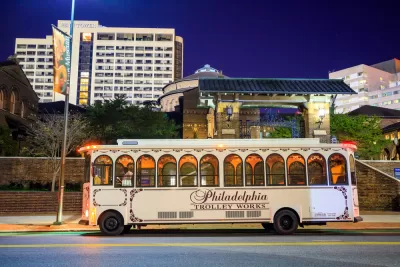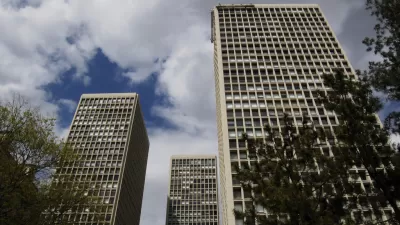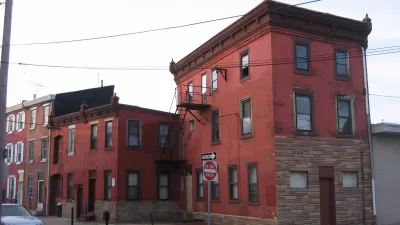Researchers from the Federal Reserve Bank of Philadelphia find evidence of displacement in Philadelphia's gentrifying neighborhoods.

[Updated January 10, 2016] "Researchers at the Community Development Studies & Education Department at the Federal Reserve Bank of Philadelphia found that Philadelphia’s gentrifying neighborhoods have lost low-cost rental units at *more than five times the rate of nongentrifying neighborhoods," according to a press release on the website of the Federal Reserve Bank of Philadelphia.
The press release explains Philadelphia's unique situation among large U.S. cities: "Although the city’s housing costs are relatively low compared with its mid-Atlantic peers, Philadelphia continues to have the highest poverty rate among the ten largest U.S. cities."
Using U.S. Census data, the study "found that between 2000 and 2014, the city lost 23,628 units with rents that fell below the $750 threshold." The study also noticed a geographic trend for the loss of affordable units: "These losses were especially acute in gentrifying neighborhoods, such as University City and the Graduate Hospital neighborhood."
Noting the economic consequences of housing constraints for low income residents, the study also calls for policymakers to take action to support the economic mobility of Philadelphia residents.
[The Federal Reserve Bank of Philadelphia contacted Planetizen to submit the following correction: The original version of this report initially misclassified three gentrifying census tracts as nongentrifying. Additionally, the gentrification type classifications have been corrected. This updated report reflects the corrected analysis.]
FULL STORY: Philadelphia Fed Research Measures Impact of Gentrification on Low-Cost Housing Stock

Alabama: Trump Terminates Settlements for Black Communities Harmed By Raw Sewage
Trump deemed the landmark civil rights agreement “illegal DEI and environmental justice policy.”

Study: Maui’s Plan to Convert Vacation Rentals to Long-Term Housing Could Cause Nearly $1 Billion Economic Loss
The plan would reduce visitor accommodation by 25% resulting in 1,900 jobs lost.

Why Should We Subsidize Public Transportation?
Many public transit agencies face financial stress due to rising costs, declining fare revenue, and declining subsidies. Transit advocates must provide a strong business case for increasing public transit funding.

Paris Bike Boom Leads to Steep Drop in Air Pollution
The French city’s air quality has improved dramatically in the past 20 years, coinciding with a growth in cycling.

Why Housing Costs More to Build in California Than in Texas
Hard costs like labor and materials combined with ‘soft’ costs such as permitting make building in the San Francisco Bay Area almost three times as costly as in Texas cities.

San Diego County Sees a Rise in Urban Coyotes
San Diego County experiences a rise in urban coyotes, as sightings become prevalent throughout its urban neighbourhoods and surrounding areas.
Urban Design for Planners 1: Software Tools
This six-course series explores essential urban design concepts using open source software and equips planners with the tools they need to participate fully in the urban design process.
Planning for Universal Design
Learn the tools for implementing Universal Design in planning regulations.
Smith Gee Studio
Alamo Area Metropolitan Planning Organization
City of Santa Clarita
Institute for Housing and Urban Development Studies (IHS)
City of Grandview
Harvard GSD Executive Education
Toledo-Lucas County Plan Commissions
Salt Lake City
NYU Wagner Graduate School of Public Service





























